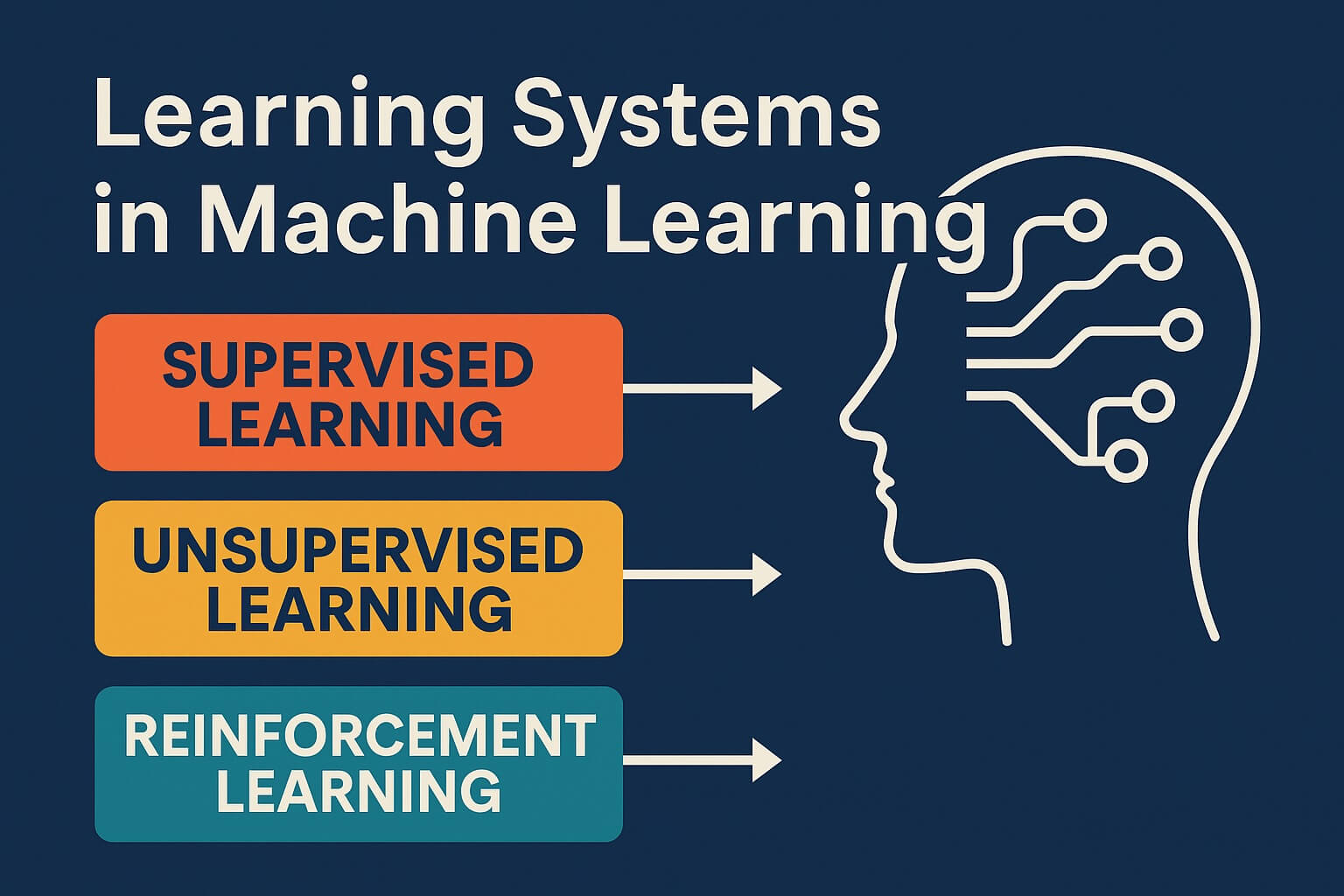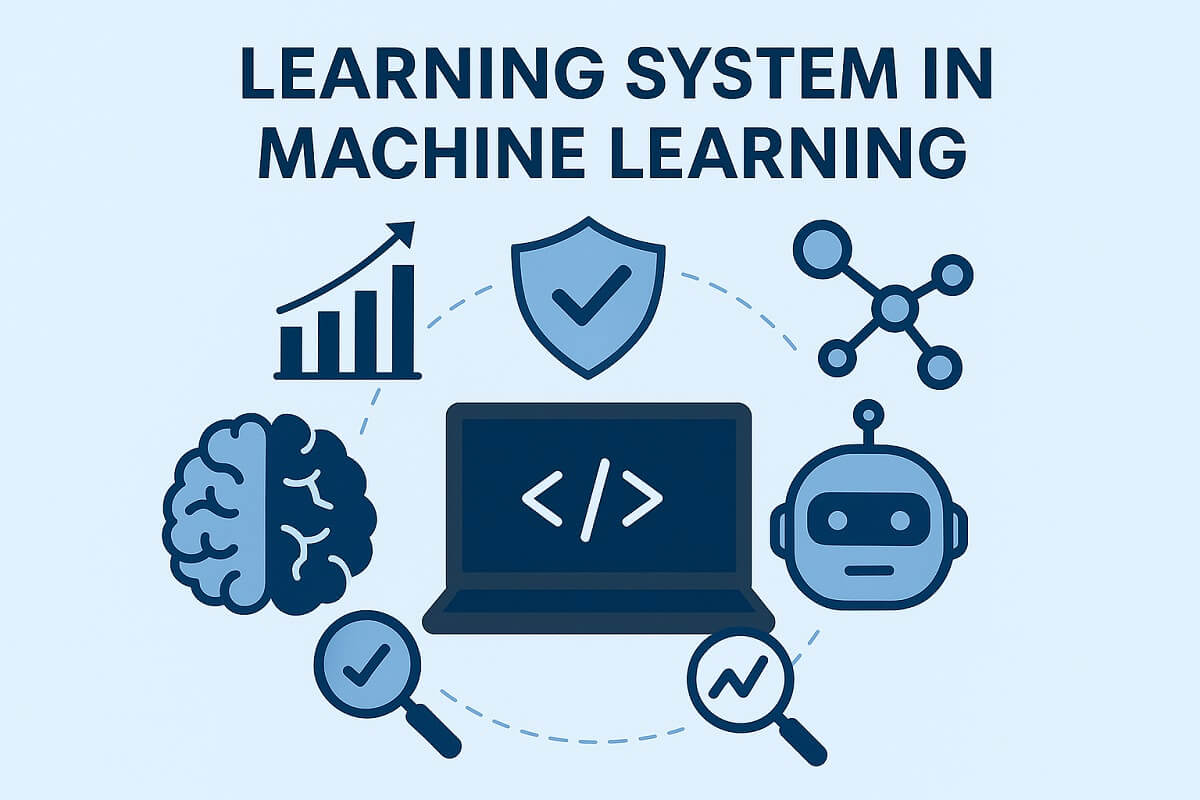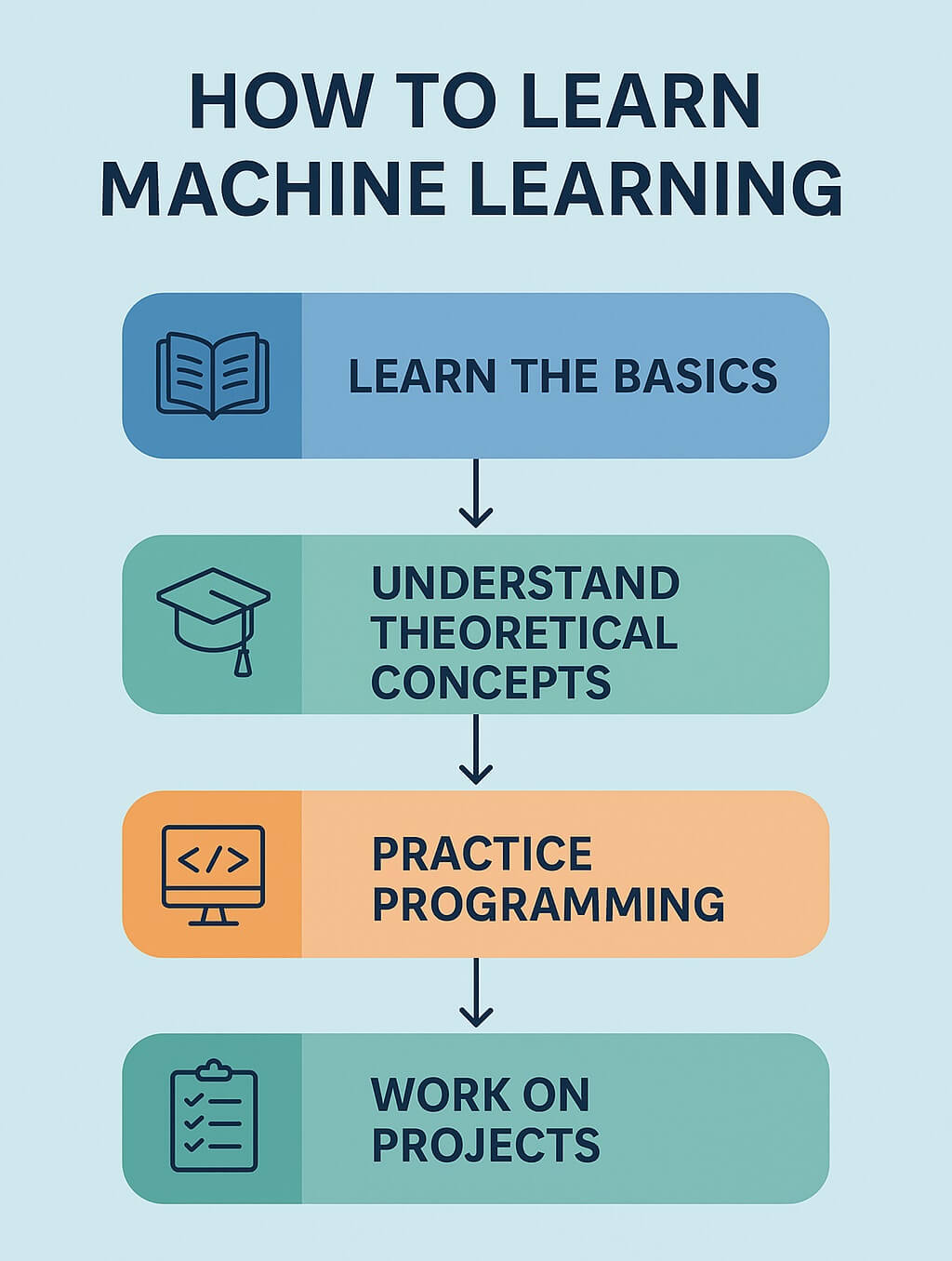
When your email automatically detects spam or your phone suggests words while you’re typing, it’s not magic—it’s a learning system doing the work. Learning systems in machine learning are the part of the model that picks up patterns from data and gets better with time.
These systems aren’t about memorizing. They’re about finding useful patterns in huge amounts of information and making decisions based on those patterns. Whether we’re talking about medical diagnosis, fraud detection, or personal recommendations, learning systems are everywhere and impact real lives.
If you’ve ever felt overwhelmed by technical jargon when trying to understand how machine learning works, this guide will help. We’ll go through the different types of learning systems, how they function, where they’re used, and why they matter in everyday decision-making.
Table of Content
- What Is a Learning System?
- Core Ideas Behind Learning Systems
- Types of Learning Systems in Machine Learning
- How Learning Systems Work in Real Life
- How Learning Systems Are Inspired by Humans
- Benefits of Learning Systems
- Common Challenges and Weaknesses
- Ethical Concerns Around Learning Systems
- What Experts Are Saying
- Learning Systems in Schools and Colleges
- Designing Learning Systems That Work
- How Learning Systems Have Changed Over Time
- What Comes Next?
- Conclusion: Why Learning Systems Deserve Attention
- FAQs

What Is a Learning System?
A learning system is a structured way in which a machine learning model learns from data. Instead of giving a computer specific instructions for every task, you give it examples—and it figures out the rest. The goal is to make predictions or decisions without being manually programmed for each one.
Tom M. Mitchell, a pioneer in machine learning, explained it like this:
“A computer program is said to learn from experience E with respect to some class of tasks T and performance measure P, if its performance at tasks in T, as measured by P, improves with experience E.”
Simply put, the more useful data you give a system, the better it gets at its job.
Core Ideas Behind Learning Systems
For a system to learn effectively, it needs a few basic elements:
-
Data: It starts with the examples. These can be numbers, text, images—anything.
-
Model: This is the framework that tries to find patterns.
-
Algorithm: The logic that helps the model update itself as it sees more data.
-
Feedback: A way to measure the performance of the model and make improvements.
Types of Learning Systems in Machine Learning
Supervised Learning
This type of learning is like learning with a teacher. You show the system examples with the right answers. It learns from these and tries to predict outcomes when new data is given.
Example: The system detects spam emails by learning from labeled examples, such as "spam" or "not spam."
Unsupervised Learning
Here, there’s no answer key. The system looks at data and finds patterns or groups.
Example: Grouping customers by shopping behavior to tailor offers.
Semi-Supervised Learning
This combines both labeled and unlabeled data. It’s useful when labeling data is too time-consuming or expensive.
Example: Medical scans where only some images are labeled by experts.
Self-Supervised Learning
This method allows a system to create its labels from raw data. It’s widely used in natural language processing.
Example: Predicting the next word in a sentence.
Reinforcement-Based Learning
The system learns by doing. It gets rewards or penalties based on its actions.
Example: A robot learning to walk or software learning to play chess.
How Learning Systems Work in Real Life
Let’s bring these into the real world:
| Type | Example |
|---|---|
| Supervised | Predicting credit scores |
| Unsupervised | Detecting unusual spending habits |
| Semi-Supervised | Diagnosing diseases from scans |
| Self-Supervised | Language translation tools |
| Reinforcement-Based | Teaching drones to navigate |
Google, Amazon, Netflix, and many healthcare providers rely on these systems daily.
How Learning Systems Are Inspired by Humans
Think about how a child learns. You show them what a dog looks like. Soon, they recognize different types of dogs—even ones they’ve never seen. That’s generalization. Machine learning systems do something similar.
They don’t copy; they observe, test, and improve. Feedback, repetition, and correction are core parts of both human and machine learning.
Benefits of Learning Systems
-
Adaptable: They can improve over time with more data.
-
Efficient: They handle massive data volumes quickly.
-
Reliable: Once trained, they reduce human error.
-
Scalable: From one device to millions, they can be deployed widely.
Governments and hospitals use them to predict disease outbreaks. Retailers use them to optimize supply chains. The benefits are already visible.
Common Challenges and Weaknesses
Not everything works perfectly:
-
Bias: If training data is biased, the results will be too.
-
Overfitting: Learning too much from training data without generalizing.
-
Transparency: Complex models can be hard to interpret.
-
Data Dependency: Poor-quality data leads to poor results.
IBM has published several studies addressing bias in facial recognition and hiring tools.
Ethical Concerns Around Learning Systems
Any system that affects people’s lives must be built responsibly.
A study by NIST showed that many facial recognition systems were less accurate for people with darker skin tones. This is not just a tech issue—it’s a human one. These findings push organizations to improve their systems and testing standards.
Governments are starting to set clearer rules. The OECD, for example, has introduced principles on fairness and accountability in AI.
What Experts Are Saying
-
Yann LeCun calls self-supervised systems the most promising path forward.
-
David Silver at DeepMind has shown how reinforcement-based learning teaches systems to play and win complex games.
-
MIT researchers argue that smaller, focused models often outperform large ones when designed with care.
Learning Systems in Schools and Colleges
Educational platforms are starting to use learning systems to personalize lessons. Some software can identify where a student is struggling and adjust the content.
UNESCO supports AI-assisted education, especially in underserved communities.
Example: A platform might use past performance to predict the best next topic for a student.
Designing Learning Systems That Work
Here are some best practices:
-
Start with clear goals.
-
Use data from diverse sources.
-
Test often and with real users.
-
Include human oversight.
-
Prioritize transparency.
How Learning Systems Have Changed Over Time
The evolution from expert systems in the 1980s to today’s context-aware models has been steady. What used to take years of programming is now automated by models that learn from scratch.
Open-source platforms like TensorFlow and PyTorch have made development more accessible.
What Comes Next?
Future systems are likely to:
-
Work with less data
-
Learn in real-time
-
Be more transparent and accountable
The OECD and IEEE are working on global standards to keep development ethical and practical.

Conclusion: Why Learning Systems Deserve Attention
Learning systems aren’t about machines replacing people. They’re about helping us process information more effectively, make better decisions, and improve systems that affect daily life.
Whether you’re building a healthcare tool or designing a mobile app, understanding how learning systems work helps you make better, safer, and more meaningful contributions to the world.
FAQs
1. What is a learning system in machine learning?
It’s the part of a model that learns from data and improves over time by identifying patterns or relationships.
2. How do supervised and unsupervised learning differ?
Supervised learning uses labeled data with known outcomes, while unsupervised learning works with data without clear labels.
3. Can learning systems make mistakes?
Yes. The system’s output may be flawed or unfair if the training data is biased or incomplete.
4. Where are learning systems used in everyday life?
Some examples are email filters, shopping recommendations, traffic prediction, education platforms, and fraud detection.
5. How can we make learning systems fair and reliable?
By using diverse datasets, regular testing, transparency in design, and involving humans in evaluation.





